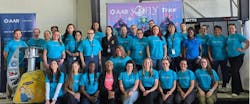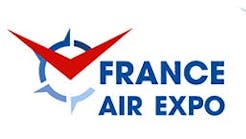Members Hone Emergency Services Skills at Civil Air Patrol Academy
MAXWELL AIR FORCE BASE, Ala. – More than 400 Civil Air Patrol officers and cadets from across America are gathering this month in Indiana for the National Emergency Services Academy, a multidisciplinary training program to be held July 8-22 at Camp Atterbury, a 30,000-acre Indiana National Guard facility in Edinburgh.
“This is Civil Air Patrol’s largest training event,” said John Desmarais, CAP’s director of operations who founded NESA. Now in its 22nd year, the annual summertime program combines task-based training with practical application that has become the nationwide standard for CAP.
The academy consists of three schools – Ground Search and Rescue School, Incident Command System School and Mission Aircrew School. Each school is divided into one-week sessions focusing on specific skills.
Ground Search and Rescue School provides members the skills they need to expertly perform ground team operations, especially search and rescue missions. Incident Command System School covers the skills needed to be top-notch leaders and staff officers at the incident command post and other critical operating locations managing operations. Mission Aircrew School teaches critical skills needed for pilots and other aircrew members to stay at the top of their game supporting the varied airborne missions of CAP like missing aircraft search and airborne photography.
This training helps ensure Civil Air Patrol’s success as many of these members completing NESA training will go home and instruct others in the latest techniques available. CAP aircrews flew 104,525 hours in fiscal year 2016, conducting search and rescue, disaster relief, air defense, counterdrug and numerous other critical missions. CAP was involved in 1,265 SAR missions and was credited by the Air Force Rescue Coordination Center with saving 92 lives.
“NESA brings in experts from across the country to provide this training with one goal: to ensure that academy graduates are armed with practical knowledge and skills to support the varied missions of CAP,” said Desmarais.
NESA operates annually with a staff of about 100, mostly CAP volunteers, complemented by instructors representing various federal, state and local agencies, including CAP-U.S. Air Force officers who monitor the training to ensure it meets Air Force standards.
A total of 34 courses, providing training for all of CAP’s emergency services mission specialty qualifications, are now offered at NESA. Six new courses have been added this year that will focus on training mission chaplains and chaplain support specialists as well as training personnel how to operate UAVs in support of disaster and search and rescue operations.
Civil Air Patrol, the longtime all-volunteer U.S. Air Force auxiliary, is the newest member of the Air Force’s Total Force. In this role, CAP operates a fleet of 560 aircraft, performs about 90 percent of continental U.S. inland search and rescue missions as tasked by the Air Force Rescue Coordination Center and is credited by the AFRCC with saving an average of 80 lives annually. CAP’s 57,000 members also perform homeland security, disaster relief and drug interdiction missions at the request of federal, state and local agencies. CAP also plays a leading role in STEM/aerospace education, and its members serve as mentors to 24,000 young people participating in CAP’s Cadet Programs. Visit www.GoCivilAirPatrol.com for more information.




